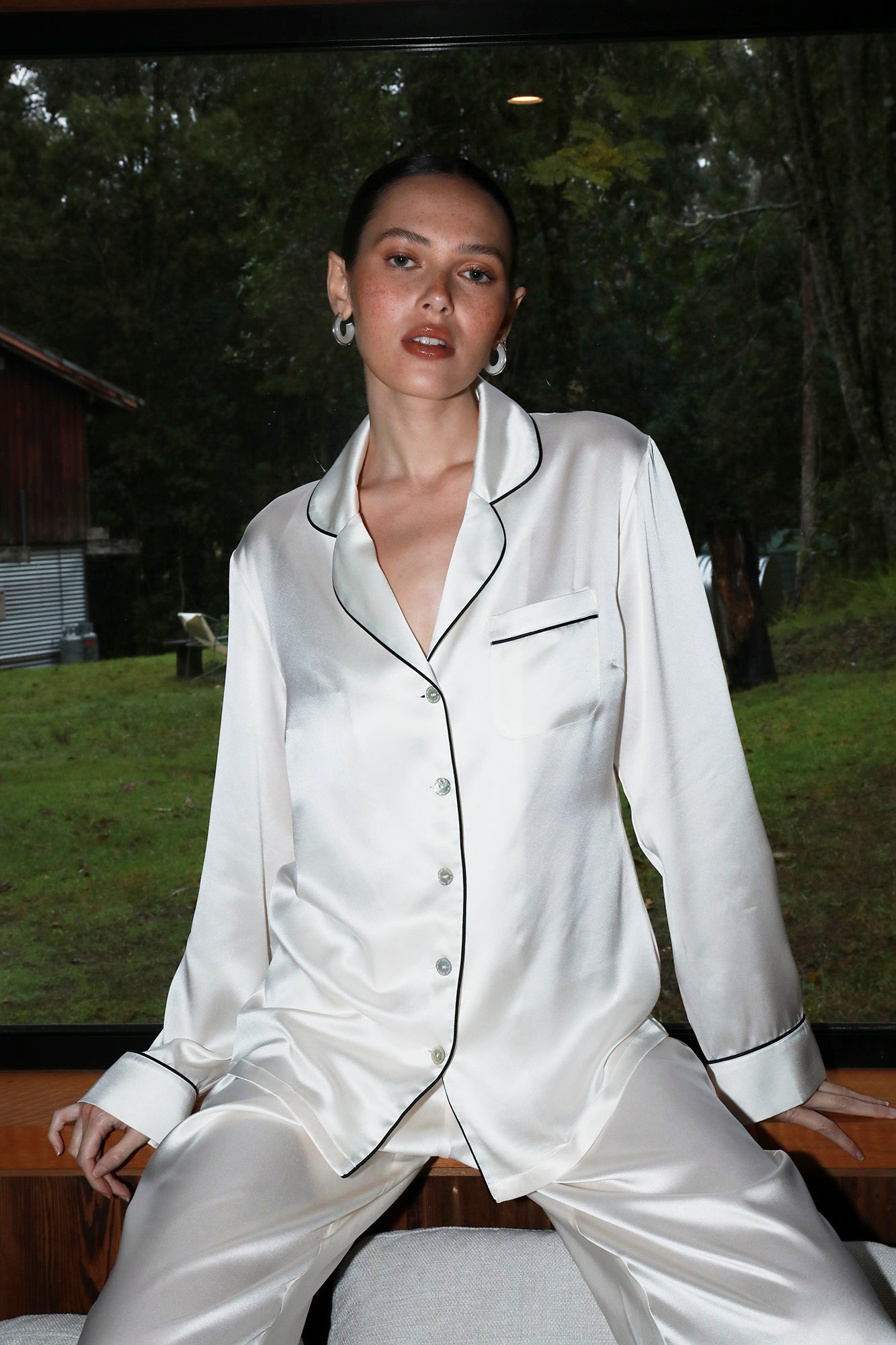Sleepwear seems like it has always been one of those things that has just existed. You would be surprised to know how it is we got to the comfy pyjamas that you wear today. Check out these 20 interesting facts about the origins of Pyjamas.
1.) Pyjamas were originally only for the rich and royal
In the middle ages, it was only monarchs and those of noble birth who wore pyjamas. Inspired by Indian, Asian and Roman Costumes, they would be decorated in elaborate designs and patterns with wide sleeves. While those that were poor wore a shapeless smock when they went to sleep.
2.) Is it spelt Pajamas or Pyjamas?
The great debate! Not really, but your old English teacher will appreciate you getting this right. The word “pajamas” used in America, wasn’t always spelt that way. In fact, in Australia and England, they are still pyjamas. The origins of the word pyjama comes from the word “pae-jama” in Hindi which means leg clothing or leg garment and dates as far back as the 13th century Ottoman Empire.
Pyjamas were traditionally loose trousers or drawers with a cord or drawstring to tie around the waist, and these were worn by both women and men throughout the Middle East and South Asia, including Bangladesh, Pakistan, Iran, and southern India.
3.) Menswear pyjamas didn't exist until 200 years later
From the early 1600s to the mid-1800s, nightshirts or bed shirts were similar in appearance to their day shirts, with a folding collar and a deep neck opening in the front. Fancier nightshirts were trimmed with lace down the sides of the sleeves and the neck. It was only by the late 1800s that nightshirts became available in a variety of fabrics, including flannel, long cloth, cotton, linen, and plain or coloured silk.
4.) Sleepwear is not just for sleeping in
Wearing clothes from bed to brunch has been in fashion since the early 1900s. Made popular by fashion designer Paul Poiret, who created silk pyjamas to be worn out during the day and for sleeping. 200 years later, we still see this trending happening today with people wearing silk Pyjama sets out and about.
Although Paris is considered to be one of the most fashionable cities in the world and a leader in couture trends, it seems that this particular idea was just a bit ahead of its time and didn’t catch on, until the jumpsuit arrived much later.
5.) Japan started an animal cosplay Pyjamas craze
Kigurumi (kee-goo-ROO-mee) is a word used to describe what are essentially pyjamas that are made to look like some form of a giant stuffed animal. This trend has existed since the 90s and continues to be a popular trend in Japan and now around the world - commonly known to people now as "onesies".
The costumed characters you find wandering around theme parks are also included within the descriptive term, and it has also led to the creation of Kigurumin, which is a style of Japanese street fashion.
6.) Let your boss know there is a day dedicated to wearing Pyjamas
National Pyjama Day is on November 20th every year. National Pyjama Day is all about wearing your favourite and comfiest Pyjamas or onesie to work or school to help raise money for charity.
The aim of the day is to raise funds and awareness for The Pyjama Foundation's Love of Learning Program, which supports children in foster care.
7.) Nightcaps Hats were a real thing, not just for sleepy wizards
Nightcaps (the articles of clothing, not the alcoholic beverage) might enter your mind mostly during the holidays (since they are featured in both ‘A Christmas Carol’ and’Twas the Night Before Christmas’), but they were popular throughout the 19th century.
The purpose is pretty obvious: to keep a person's head warm during the winter while he or she slept. But the design has some thought behind it. The pointed cap is long enough to wrap around your neck like a scarf, but not so long that it could choke you in the middle of the night.
8.) History defines Fashion
The timeline of fashion is closely linked to historic events that shaped the world. With the liberation of female sexuality over the 20th century, we saw the trend of the "Baby doll" Pyjama begin to rise - a smock-style sleeveless top that went down to just below the hips.
The male pyjama sets that replaced the traditional male nightshirts developed into something simple and comfortable that was inspired by the military wear of WWI. It usually isn't until many years later that we can look back and see the impact of these world events on the way we behave and dress.
9.) A Nightie was for men originally
Did you know that nightdresses or nighties only recently became thought of as a woman's pyjama style? It wasn't until the turn of the century, as before that, most men commonly slept in nightdresses. It was after the Great Depression and WWII that the shift began to happen. Men became more concerned with their look and how they were presenting themselves to the public, that the nightdress became a thing of the past.
10.) Which pyjama materials do we sleep best in?
Historically, pyjamas were most comfortably made in the finer fabrics for the rich. Softness, comfort, cooling and breathability have long been the main goals of pyjama design. Fast forward to today's pyjamas, and here we are still striving for the same things.
Thankfully, the pyjama industry has evolved to provide us with the best options to date: European grown cotton, cotton/modal blends when we need a good stretch, ultra-comfortable 100% cotton broadcloth, and the breathability of lightweight woven fabrics of silk and natural woods. Below is a breakdown of all the best fabrics to wear when sleeping and why:
- Silk: For those who love the feeling of luxury.Silk pyjamas help keep moisture close to your skin and remain hydrated. While the breathable nature of the fabric acts as a natural temperature regulator.
- Cotton: The all-natural fabric is the go-to for most pyjamas. It is soft, lightweight and breathable which allows air circulation to your skin.
- Bamboo: Helps to wick away any moisture from your skin overnight and keeps you cool and protected. Bamboo acts as the perfect thermo-regulator for any night's sleep.










